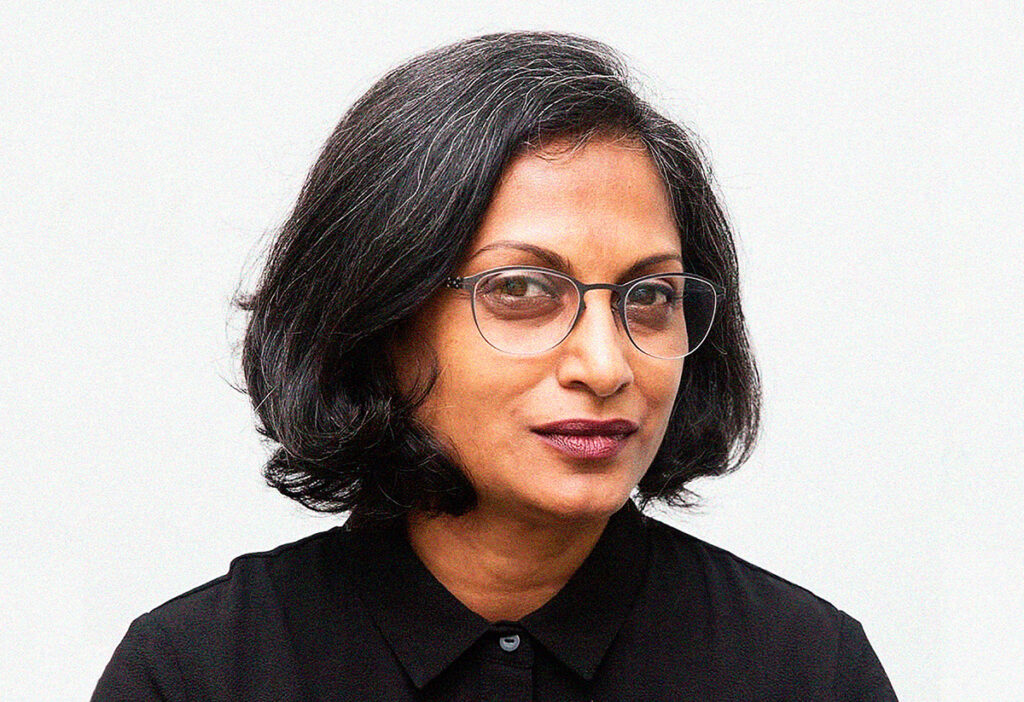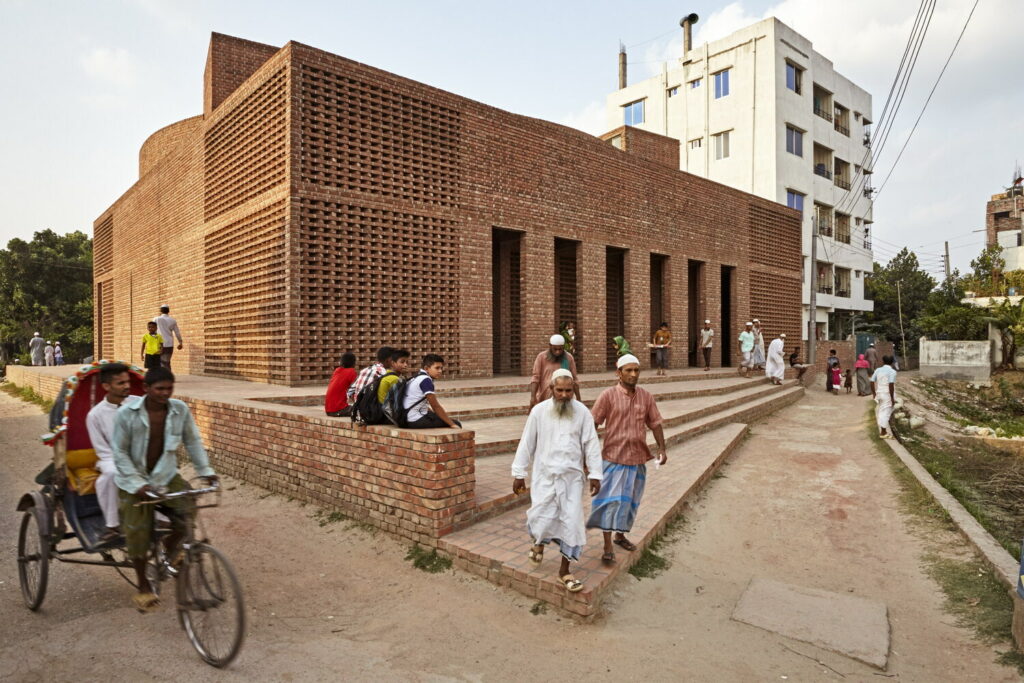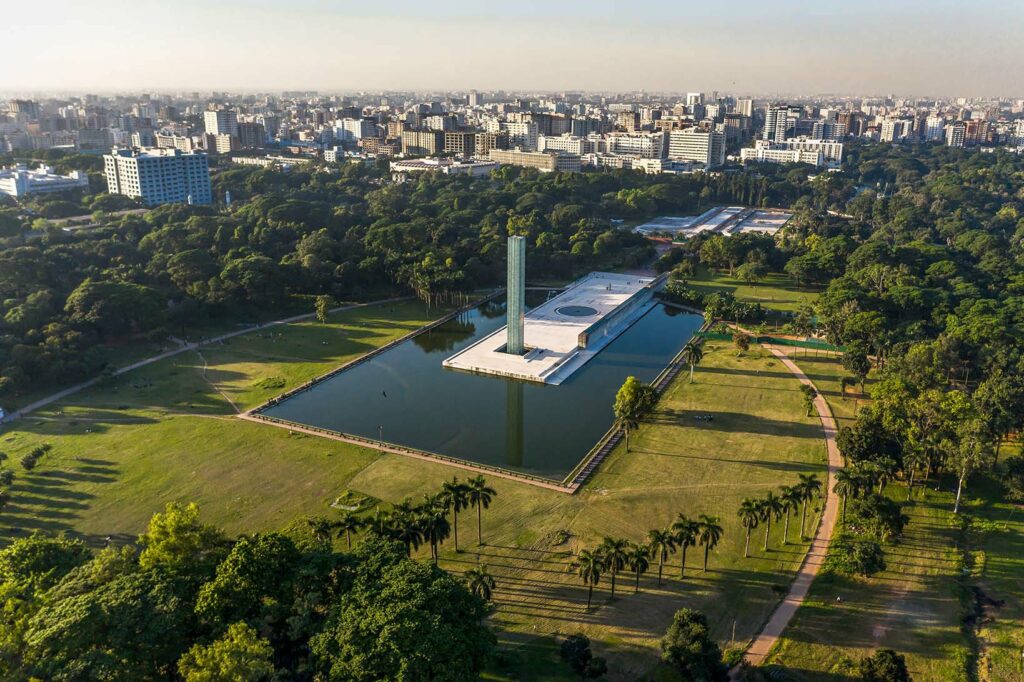Unlock Premium, Members-Only Content
Your source for the most relevant updates in sustainable construction
Marina Tabassum: A Visionary in Sustainable Architecture
Marina Tabassum is not just an architect; she is a visionary whose designs breathe life into bricks and mortar. Her journey in architecture extends beyond creating spaces; it’s about fostering communities, respecting the environment, and celebrating local culture. As a recipient of the prestigious Aga Khan Award for Architecture, her work transcends ordinary expectations, setting new benchmarks for what buildings can and should be in the context of sustainability and societal impact.
Marina Tabassum: Early Life and Education
The Formative Years
Marina Tabassum was born into a context rich with cultural heritage and historical complexity. Growing up in Dhaka, Bangladesh, her surroundings were a tapestry of architectural styles, from Mughal palaces to British colonial buildings and modern concrete high-rises. This eclectic mix not only shaped her aesthetic but also her understanding of space as a medium of community life and cultural identity.
Education and the Foundation of a Career
Marina’s academic journey at the Bangladesh University of Engineering and Technology (BUET) was nothing short of rigorous. It was here that she not only honed her technical skills but also developed a profound appreciation for architecture that serves people and the planet. Her educational path was marked by a relentless pursuit of knowledge and a deep commitment to her homeland’s architectural heritage.
Education Highlights:
- University: Bangladesh University of Engineering and Technology (BUET)
- Degree: Bachelor of Architecture
- Philosophy: Architecture that respects local context and sustainability
The Launch of URBANA
Together with Kashef Chowdhury, Marina co-founded URBANA, a firm that quickly became synonymous with innovative and contextually aware architectural solutions. Although her partnership with Chowdhury would eventually end, the firm was instrumental in laying the groundwork for her future explorations in architecture.
URBANA Overview:
- Founded: Date when URBANA was established
- Co-founder: Kashef Chowdhury
- Contributions: Combination of modern design with local materials and techniques
This narrative of Marina Tabassum’s early years sets the stage for an architect whose work is not just built but deeply rooted in the cultural and environmental fabric of Bangladesh. Her story is one of passion woven into the very structures she creates, each telling a story of heritage, sustainability, and hope.

Marina Tabassum Architects (MTA)
In the wake of her experience with URBANA, Marina Tabassum founded her own architectural firm, Marina Tabassum Architects (MTA), with a clear vision to integrate architectural practice with environmental sustainability and cultural integrity. The firm quickly established itself with a philosophy deeply rooted in the belief that architecture should be minimalistic, contextually relevant, and timelessly valuable.
MTA’s Core Philosophies:
- Sustainability: Designs that minimize environmental impact.
- Contextual Relevance: Buildings that respect and reflect local cultures and climates.
- Timeless Value: Structures that are designed to be relevant and functional across generations.
Key Projects and Their Societal Impacts
MTA has been responsible for several impactful projects that not only showcase architectural brilliance but also demonstrate a commitment to community and sustainability. Here are a few standout initiatives:
- Bait Ur Rouf Mosque, Dhaka
- Completion: 2012
- Award: Aga Khan Award for Architecture (2016)
- Features: Natural ventilation, light-filled prayer hall, use of local materials.
- Impact: Provides a serene place of worship and community gathering that respects Islamic traditions while fostering a connection with nature.
- Friendship Centre, Gaibandha
- Completion: 2011
- Features: Rammed-earth walls, courtyards for community gatherings, flood-resistant design.
- Impact: Acts as a community center and training facility in a flood-prone area, emphasizing resilience and local building traditions.
MTA’s approach to sustainable architecture is evident through the use of local materials, the integration of traditional Bangladeshi architectural elements, and a strong emphasis on environmental and social sustainability. These projects are more than just buildings; they are active participants in their communities, designed to enhance human well-being and environmental health.
Marina Tabassum’s Signature Projects
Bait Ur Rouf Mosque: A Testament to Sacred Simplicity

The Bait Ur Rouf Mosque stands as a pinnacle of Marina Tabassum’s architectural philosophy. Stripped of extraneous decoration, the mosque is celebrated for its simple, geometric elegance and profound use of space and light, which facilitate a deep spiritual connection for its visitors.
Design Highlights:
- Structure: Brick construction using traditional techniques.
- Light: The clever use of skylights and open courtyards allows natural light to define the prayer spaces.
- Ventilation: Natural ventilation strategies reduce the need for artificial cooling.
Independence Monument and Museum of Bangladesh

Another significant project is the Independence Monument and Museum of Bangladesh, which Tabassum designed to commemorate the country’s struggle and resilience. This project merges historical significance with architectural innovation, offering a space for reflection and education.
Project Features:
- Location: Suhrawardy Udyan, Dhaka
- Components: The monument itself and an underground museum that narrates the history of Bangladesh’s liberation war.
- Design: Reflects the solemnity and gravity of the independence struggle through minimalist design and the thoughtful use of water and green spaces.
These projects exemplify Marina Tabassum’s commitment to creating spaces that are not only functional and beautiful but also deeply embedded with cultural narratives and sustainable practices. Each building tells a story, not just of its own design, but of the people and the landscape it serves.
Marina Tabassum: Philosophy of Architecture
“Architecture of Relevance”
Marina Tabassum advocates for an “Architecture of Relevance,” a philosophy that underscores the necessity of creating spaces that resonate deeply with their environmental and cultural surroundings. This approach is not just about aesthetics or functionality but about enriching the lives of the people who interact with these spaces daily.
Core Elements of Her Philosophy:
- Responsiveness to Climate: Design choices that consider the local climate to improve comfort and reduce environmental impact.
- Cultural Sensitivity: Architecture that reflects and respects local heritage and practices.
- Social Engagement: Creating spaces that foster community interaction and support.
Integrating Local Materials and Community Needs
A hallmark of Tabassum’s work is her use of local materials, which not only supports the local economy but also reduces the carbon footprint associated with transportation of materials. Moreover, her designs often incorporate the needs and feedback of the community, ensuring that the projects serve the people effectively and empathetically.
Examples of Material and Community Integration:
- Bait Ur Rouf Mosque: Use of locally sourced bricks and traditional construction techniques.
- Friendship Centre: Designed as a community hub in a flood-prone area, incorporating local materials and elevated structures to withstand flooding.
This philosophy ensures that her projects are not only architecturally sound and aesthetically pleasing but also deeply integrated with the local community and environment, setting a precedent for how architecture can serve as a tool for social and ecological well-being.
Architectural Techniques and Innovations
Mastery of Natural Light and Ventilation
One of Marina Tabassum’s trademarks is her ingenious use of natural light and ventilation in her designs. This not only enhances the aesthetic quality of the spaces but also significantly improves energy efficiency and comfort for the inhabitants.
Techniques Used:
- Strategic Placement of Windows and Skylights: Optimizes natural light, reducing the need for artificial lighting.
- Innovative Ventilation Solutions: Designs that promote air circulation, maintaining comfortable indoor temperatures naturally.
Adapting Traditional Methods for Modern Needs
Marina’s approach often involves a creative reinterpretation of traditional Bangladeshi architectural methods, adapted to meet contemporary needs. This fusion of old and new ensures that her projects are both culturally relevant and functionally modern.
Examples of Traditional Adaptations:
- Rammed Earth Techniques: Used in the Friendship Centre, this traditional method provides excellent thermal mass while being environmentally friendly.
- Courtyard Layouts: Modern interpretations of traditional courtyard designs in residential projects, which foster community interaction and passive cooling.
These architectural techniques and innovations not only demonstrate Marina Tabassum’s skill as an architect but also her commitment to creating environments that are sustainable, functional, and deeply integrated with their cultural context. Her work exemplifies how innovative thinking and respect for traditional practices can come together to create meaningful and sustainable architecture.
Marina Tabassum: Challenges in the Architectural Field
Navigating Barriers as a Woman in Architecture
Despite her accolades, Marina Tabassum’s journey hasn’t been without its challenges, particularly those stemming from being a woman in a traditionally male-dominated field. Her experiences highlight the broader issues of gender inequality in architecture and underscore her resilience and determination to succeed.
Key Challenges:
- Breaking Stereotypes: Overcoming preconceived notions about women’s roles and capabilities in architecture.
- Balancing Professional and Personal Life: Managing the demands of a high-profile career while maintaining personal commitments.
Marina’s success serves as an inspiration for aspiring female architects, demonstrating that barriers can be overcome with perseverance and dedication.
Balancing Modernity with Tradition in Bangladeshi Architecture
Another significant challenge Marina faces is integrating modern architectural practices with Bangladesh’s rich traditions. This involves a delicate balance of respecting historical and cultural contexts while embracing innovative solutions that meet contemporary needs.
Strategies for Integration:
- Cultural Sensitivity: Ensuring that modern designs do not overshadow cultural heritage.
- Community Involvement: Engaging local communities in the design process to ensure that new projects are well-received and integrated into the cultural fabric.
These challenges are not merely obstacles but opportunities for innovation and creativity in Marina’s work, allowing her to craft solutions that are both respectful of tradition and forward-looking.
Marina Tabassum: Community Engagement and Social Impact
Projects Aimed at Improving Lives in Precarious Contexts
Marina Tabassum’s architecture goes beyond mere construction; it serves as a vital tool for community development and empowerment. Her projects, particularly those in vulnerable or underprivileged areas, are designed with the intent to improve lives by addressing specific social challenges through thoughtful architectural solutions.
Key Community-focused Projects:
- Cyclone Shelters in Coastal Bangladesh: These structures double as community centers during off-seasons and are robust enough to provide safe havens during cyclones, reflecting a deep understanding of local needs and environmental conditions.
- Modular Housing for Displaced Communities: Innovative, low-cost housing solutions that can be quickly deployed in disaster-hit regions, offering dignity and stability to displaced populations.
These initiatives exemplify how architecture can be leveraged as a catalyst for social change, providing not just roofs over heads but also spaces that foster community spirit and resilience.
Marina Tabassum: Architecture as a Tool for Social Change
Marina Tabassum’s belief in architecture as a medium for social change is evident in how her projects integrate with local communities. Each design is more than a structure; it’s a space imbued with potential to catalyze community interaction, education, and development.
Social Change Through Design:
- Educational Facilities in Rural Areas: These projects focus on accessibility to quality education, with school designs that incorporate elements conducive to learning in rural settings.
- Public Health Facilities: Architectural designs that enhance access to healthcare services in underserved areas, improving overall community health standards.
Marina’s commitment to social impact through architecture demonstrates the profound role that built environments play in shaping societal dynamics and enhancing the quality of life.
Global Influence and Collaborations
Marina Tabassum and Collaborations with International Architects and Institutions
Marina Tabassum’s reputation as a visionary architect transcends national borders. Her collaborations with international architects and academic institutions have facilitated a fruitful exchange of ideas, blending global perspectives with local practices.
Notable Collaborations:
- Joint Projects with International Architecture Firms: These collaborations bring together diverse expertise to tackle complex architectural challenges, often resulting in innovative and culturally nuanced solutions.
- Academic Partnerships: Engagements with universities worldwide to conduct joint research and student exchange programs, enriching architectural education and practice globally.
These collaborations not only enhance Marina’s architectural practice but also contribute to the global architectural discourse, promoting a more inclusive and comprehensive approach to design.
Marina Tabassum: Impact on Global Architectural Practices
Marina Tabassum’s influence on the world stage is marked by her advocacy for sustainable and culturally responsive architecture. Her participation in international conferences and exhibitions has positioned her as a leader in promoting an architecture that prioritizes both environmental stewardship and social relevance.
Global Impact:
- Conferences and Speaking Engagements: Through these platforms, Marina shares her insights on sustainable design and cultural sensitivity, influencing architects and planners around the world.
- Exhibitions of Her Work: Her projects, showcased internationally, serve as case studies in integrating sustainability and local culture in architectural designs.
Marina Tabassum’s global influence is a testament to her deep commitment to an architecture that not only looks good but also does good, paving the way for future generations of architects to embrace a more holistic approach to building environments. Through her international collaborations and global engagements, she continues to inspire and challenge the architectural community to think globally while acting locally.
Conclusion: The Enduring Legacy of Marina Tabassum
Marina Tabassum stands as a beacon in the world of architecture, not only for her innovative designs but also for her profound commitment to sustainability, community, and cultural sensitivity. Her work transcends traditional architectural practices by integrating local materials, promoting environmental stewardship, and emphasizing social values. This holistic approach has not only shaped the skylines but also the lives of those who dwell within and around her creations.
Marina’s impact on architecture is immeasurable. She has redefined what it means to be an architect in the modern world—shifting the focus from merely creating spaces to solving real-world problems through thoughtful design. Her projects are a testament to the power of architecture as a tool for positive change, addressing issues from climate resilience to social inclusion.
If you want to learn about our consultancies in Portuguese language, click here.
Unlock Premium, Members-Only Content
Your source for the most relevant updates in sustainable construction